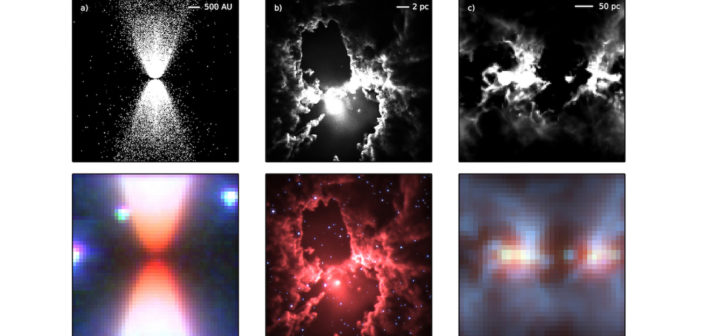One of the challenges of astronomy is connecting theoretical models of distant objects to observations. Numerical simulations can produce ideal visualizations of objects and their physical processes, but this doesn’t necessarily represent what we’ll be able to see when we look at these sources with instruments that have finite resolution and sensitivity. Two scientists with the Max Planck Institute for Astronomy in Germany, Christine Koepferl and Thomas Robitaille, have now created a tool to help us make these connections: an open-source Python package called the FluxCompensator. This software package allows scientists to post-process the output of their numerical simulations, adding observational effects to the data like telescope point-spread functions, transmission curves, finite pixel resolution, noise, and reddening. The outputs of the FluxCompensator are images more consistent with what we would expect to be able to observe with our available telescopes and instruments.
In the figure above (click for a closer look), the authors display three simulated sources: a) a young stellar object, b) a star-forming region, and c) the center of a galaxy. The top panels show synthetic single-band observations extracted directly from the models, whereas the bottom panels are synthetic three-color images produced by the FluxCompensator that mimic the observational effects expected if these sources were observed as part of the GLIMPSE survey with Spitzer (a and b) or the Hi-GAL survey with Herschel (c). To read more about FluxCompensator, check out the article below.
Citation
Christine M. Koepferl and Thomas P. Robitaille 2017 ApJ 849 3. doi:10.3847/1538-4357/aa8666


1 Comment
Pingback: comparing theory and observations: new tool